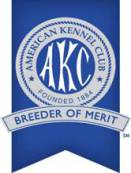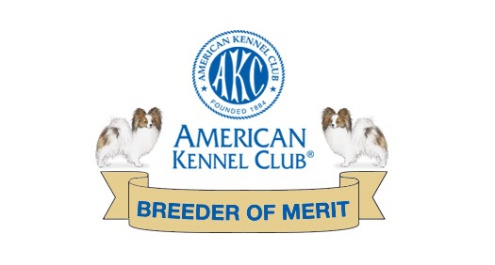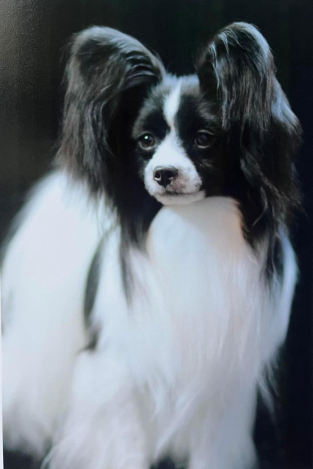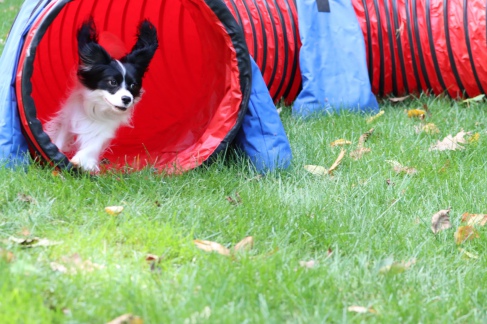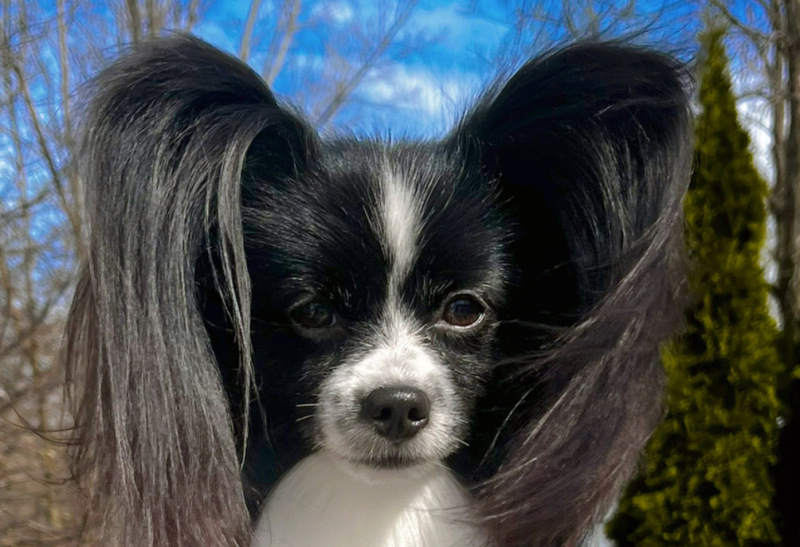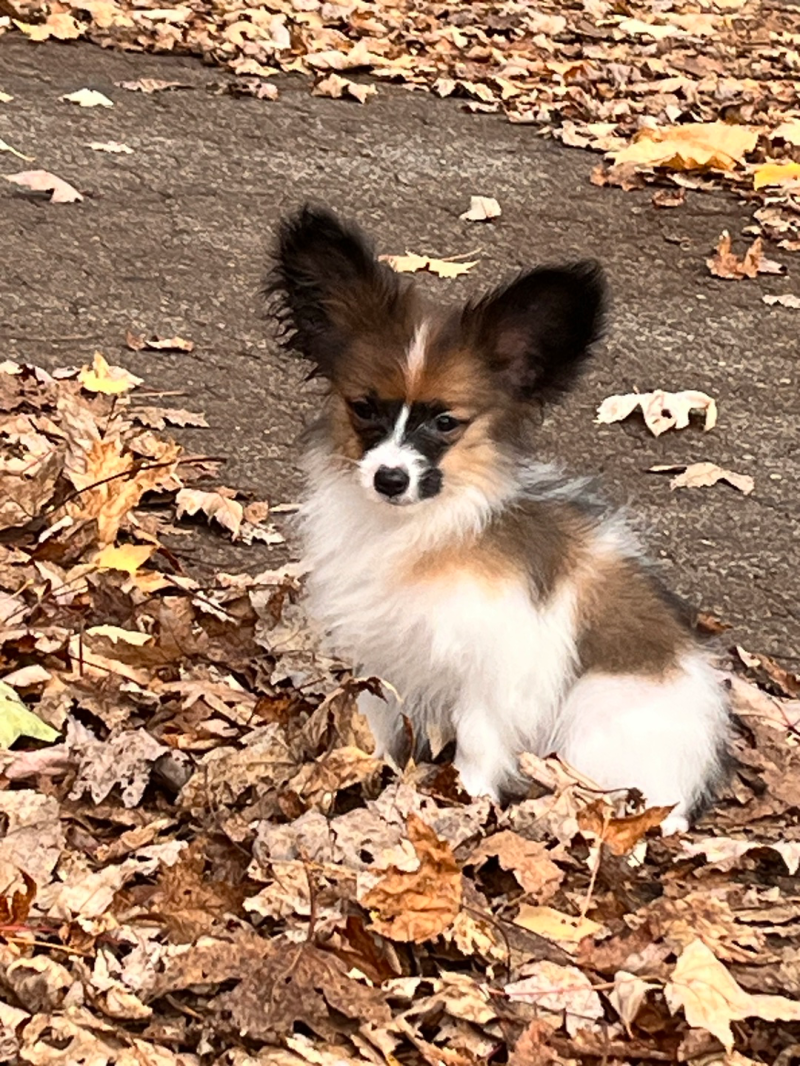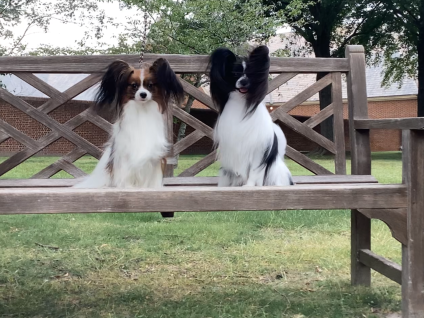Grooming the Papillon
For a breed with long, silky hair, Papillons needs surprisingly little grooming, mostly because they do not have an undercoat. Grooming every month or so is fine. Between full grooming sessions, you might want to spend a few minutes running a comb or soft slicker brush through the hair inside the hind legs, behind the ears, and on the "culottes," or thigh hair, as mats tend to form there. A Papillon will need a bath every few months, or when he or she gets especially muddy or dirty. The Papillon's nails grow quickly and should be trimmed regularly' especially the dewclaw, which can curl around and pierce the leg. Finally, regular tooth brushing is vital for dental health.
Do Papillons shed?
Papillons shed hair very little and is similar to human hair shedding. typically they shed once each year. The process is usually completed within 1-2 months. Unlike shorter coated dogs, a Papillon often has no shedding for much of the year.
When do Papillons shed?
Papillons typically shed their coats in the spring – brought on by warmer temperatures and more sunlight. A non-spayed bitch (female) will shed 2-3 months after her cycle or litter of puppies.
How much do Papillons shed?
A Papillon will shed usually once each year. When they do, they will shed most of their coat over a 1-2-month period. Being a single-coated breed, the shed usually is similar to people shedding hair since they only have the outer coat. It is important to remove any coat as it begins to loosen, preventing any mats or hot spots from forming. Once the old coat is removed, the new coat will begin to grow. Unlike many breeds that shed continually, a fresh, healthy Papillon coat has essentially no shedding the rest of the year.
What is the Papillon coat like?
Abundant, long, fine, silky, flowing, straight with resilient quality, flat on back and sides of body. A profuse frill on chest. There is no undercoat. Hair short and close on skull, muzzle, front of forelegs, and from hind feet to hocks. Ears well fringed, with the inside covered with silken hair of medium length. Backs of the forelegs are covered with feathers diminishing to the pasterns. Hind legs are covered to the hocks with abundant breeches (culottes). Tail is covered with a long, flowing plume. Hair on feet is short, but fine tufts may appear over toes and grow beyond them, forming a point.
What Colors do Papillons come?
Always parti-color or white with patches of any color(s). On the head, color(s) other than white must cover both ears, back and front, and extend without interruption from the ears over both eyes. The size, shape, placement, and presence or absence of patches of color on the body are without importance. Among the colors there is no preference, provided nose, eye rims and lips are well pigmented black.White & Black, White & Lemon,White & Red, White & Sable, and White Black & Tan.
How to groom a Papillon?
Grooming a Papillon requires, at minimum, a pin brush, slicker brush, greyhound comb, toenail clippers, hair scissors, and spray bottle with mixed water & conditioner. Using a line-brushing technique, the Papillon coat needs to be groomed down to the skin, removing all knots and tangles. Feet, nails, hocks, and pasterns should be trimmed short to keep feet from picking-up dirt and mud.
When do Papillons get their full coat?
Papillon get their full coat by two years of age, or their third coat. Puppy coats are typically fluffy, but softer and shorter than adult coats. The first adult coat (second coat) will be a harsher texture than a puppy coat, but not the volume or length. The second adult coat (third coat) will have the full shine and length the breed is known for.
Pet quality Papillon puppies usually cost $3,500-$4,500 with AKC Limited Registration (no breeding rights).
Top-quality Papillon puppies can cost as much as $4,500 or more with a lifetime health guarantee from a quality breeder.
Show/breeding puppy prospects will cost $5,500-$10,000 for the finest conformation and bloodlines.
Learn more about buying a quality Papillon from a reputable breeder

